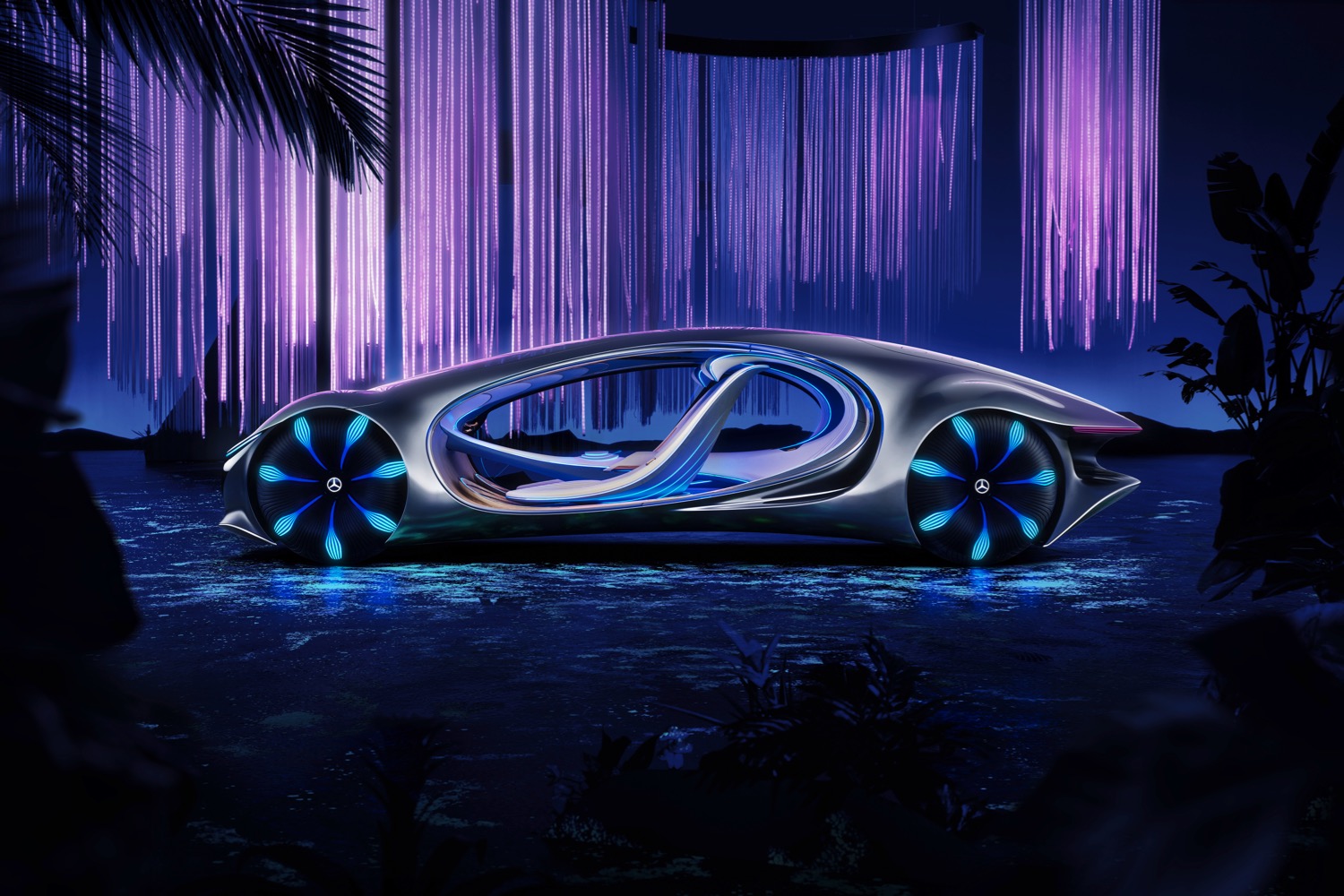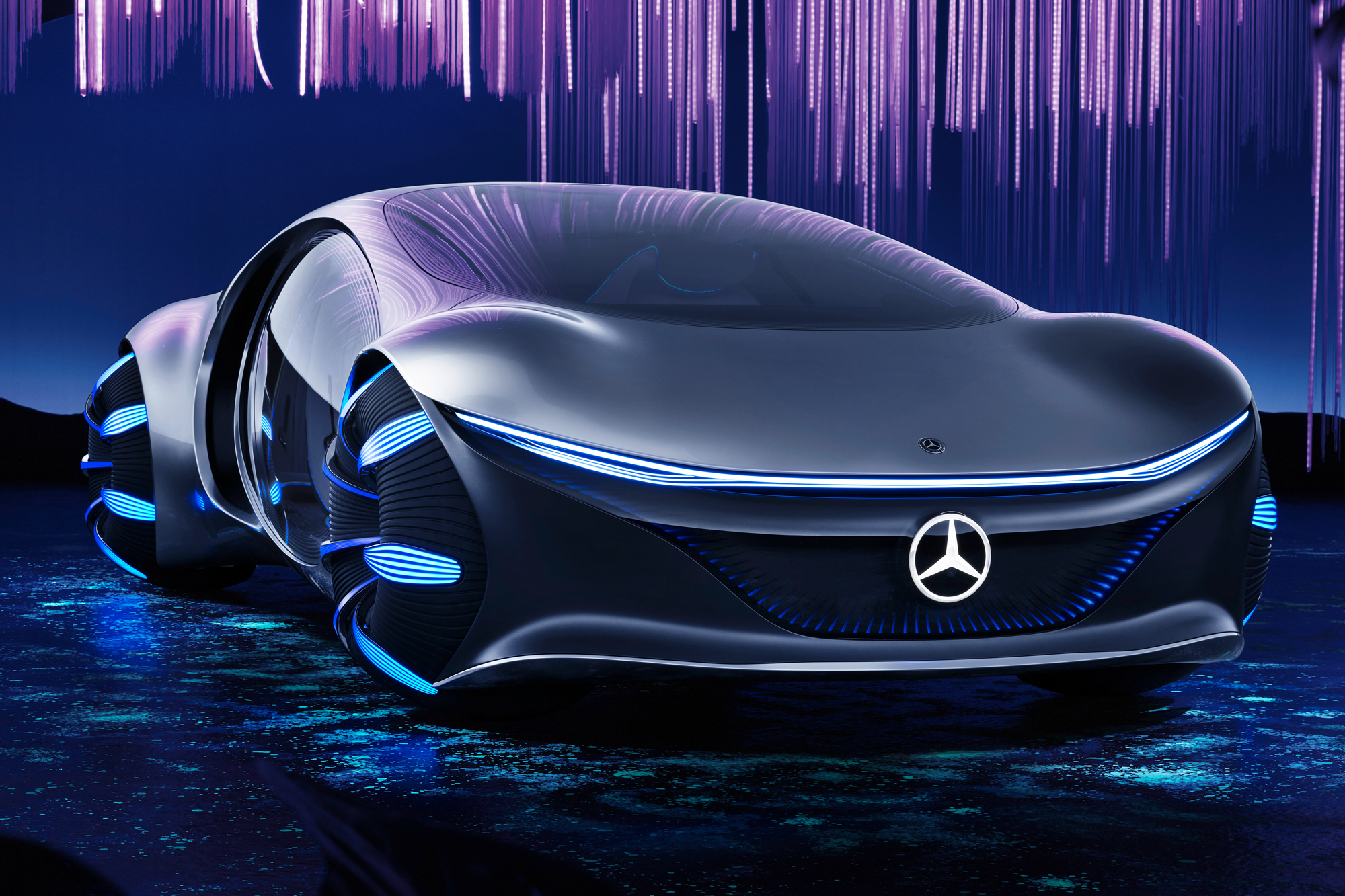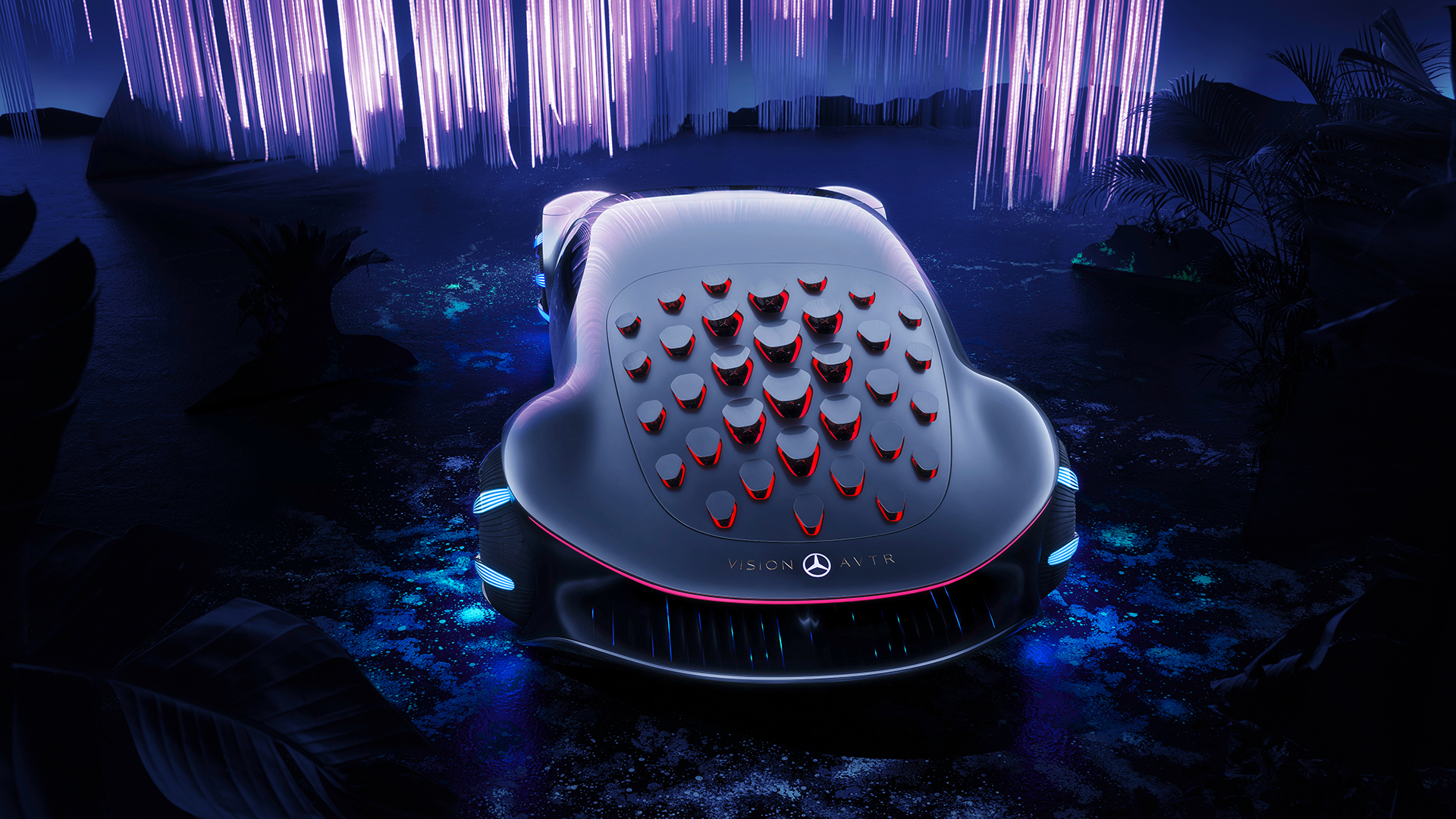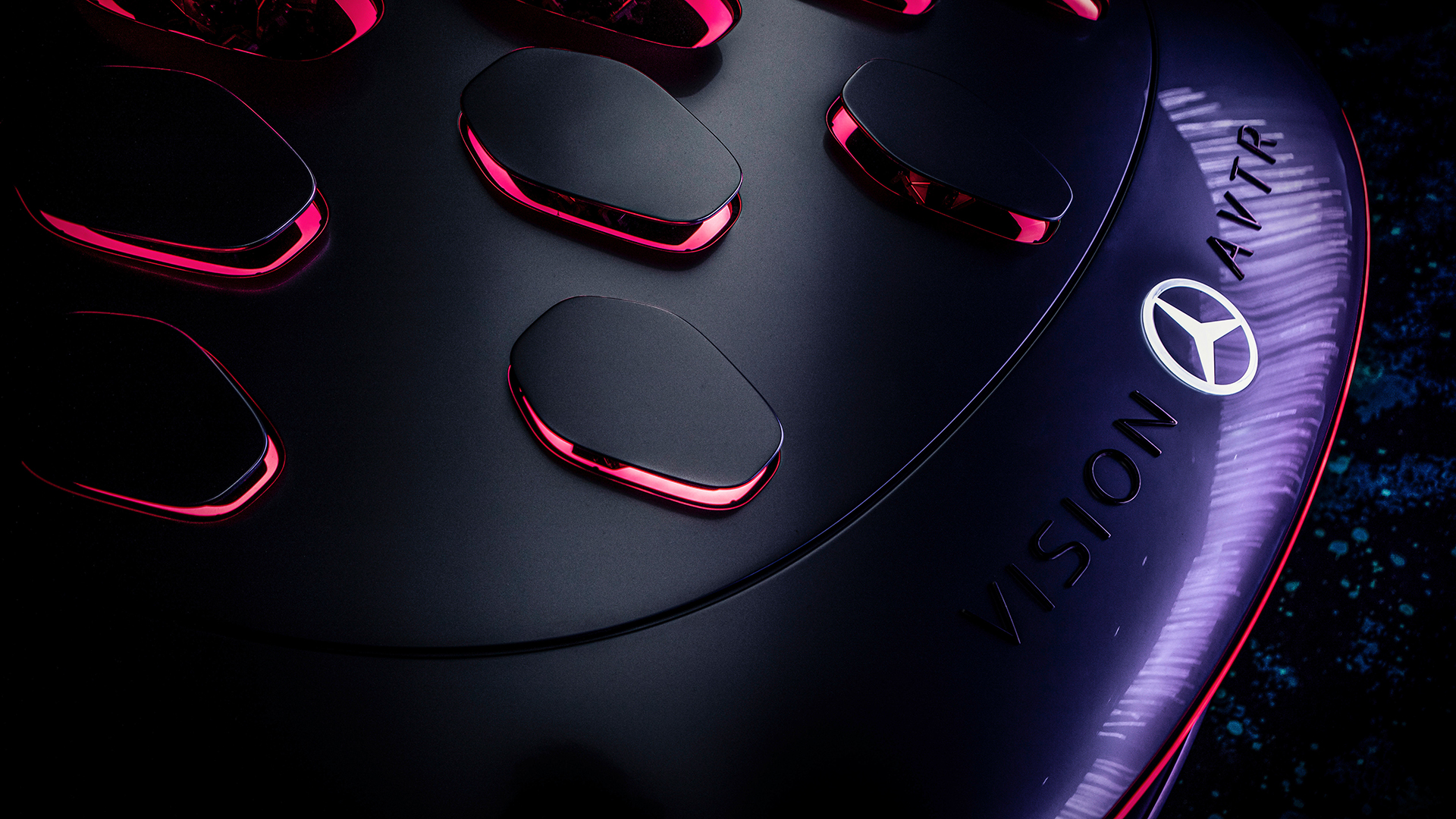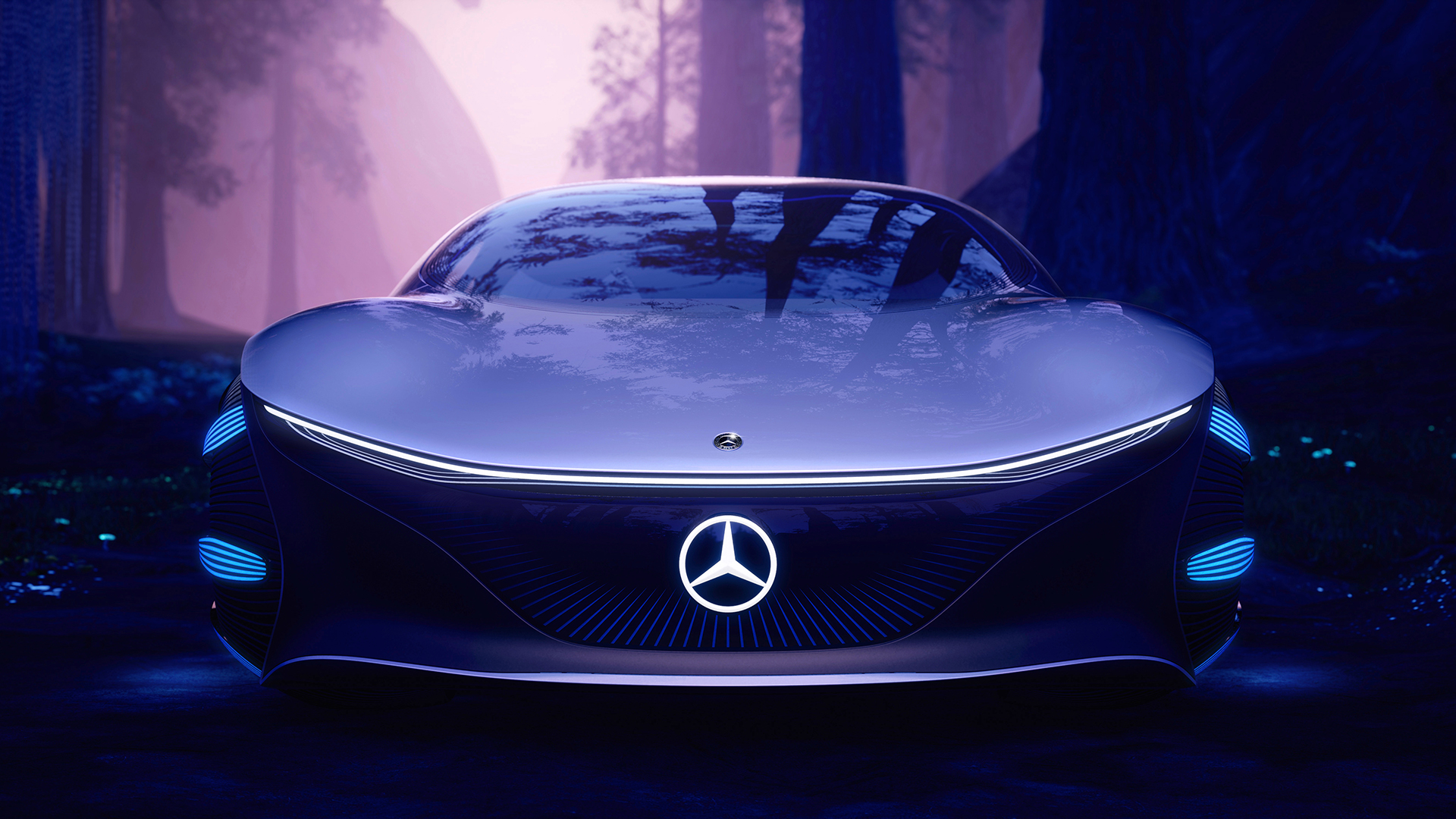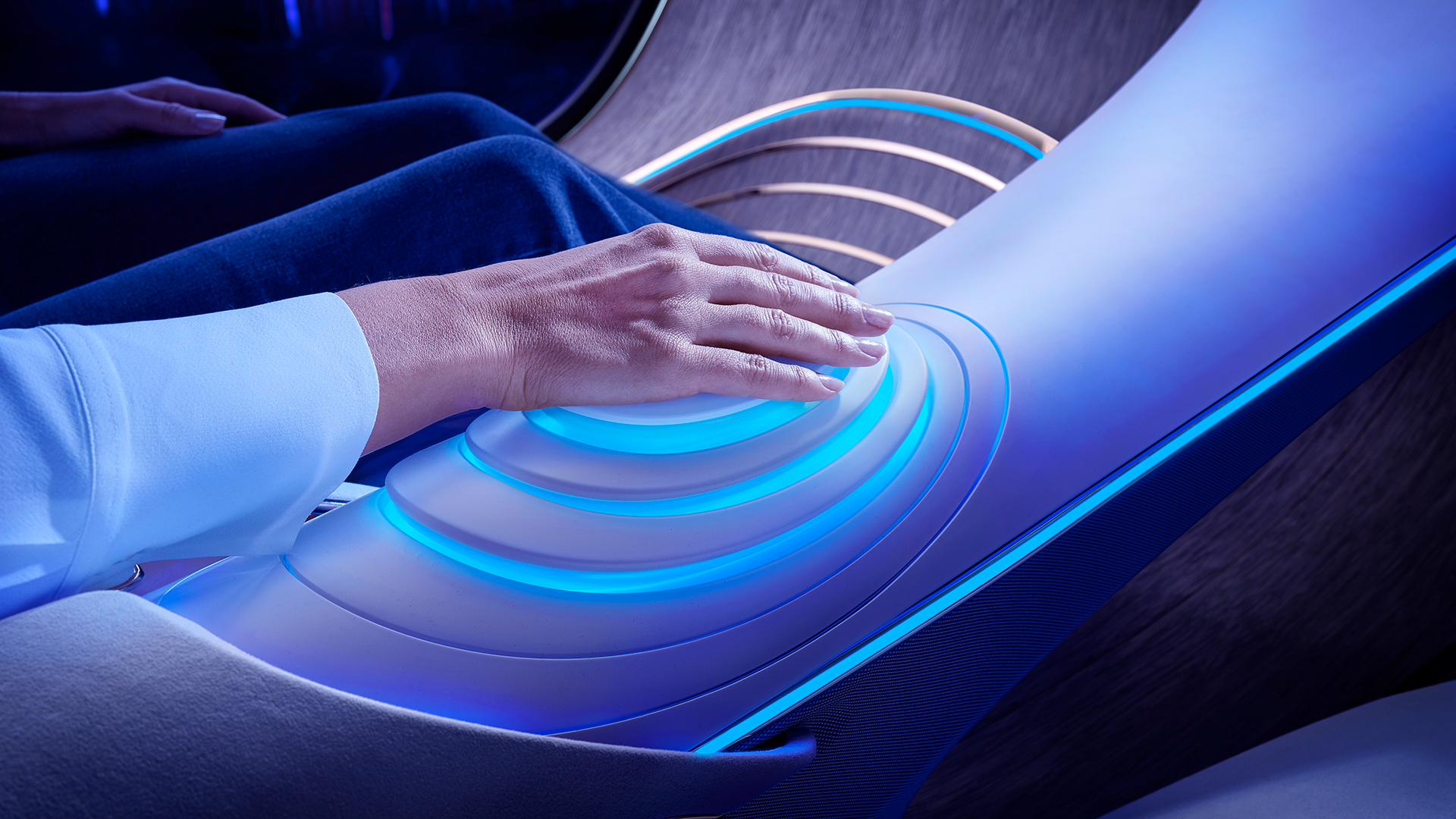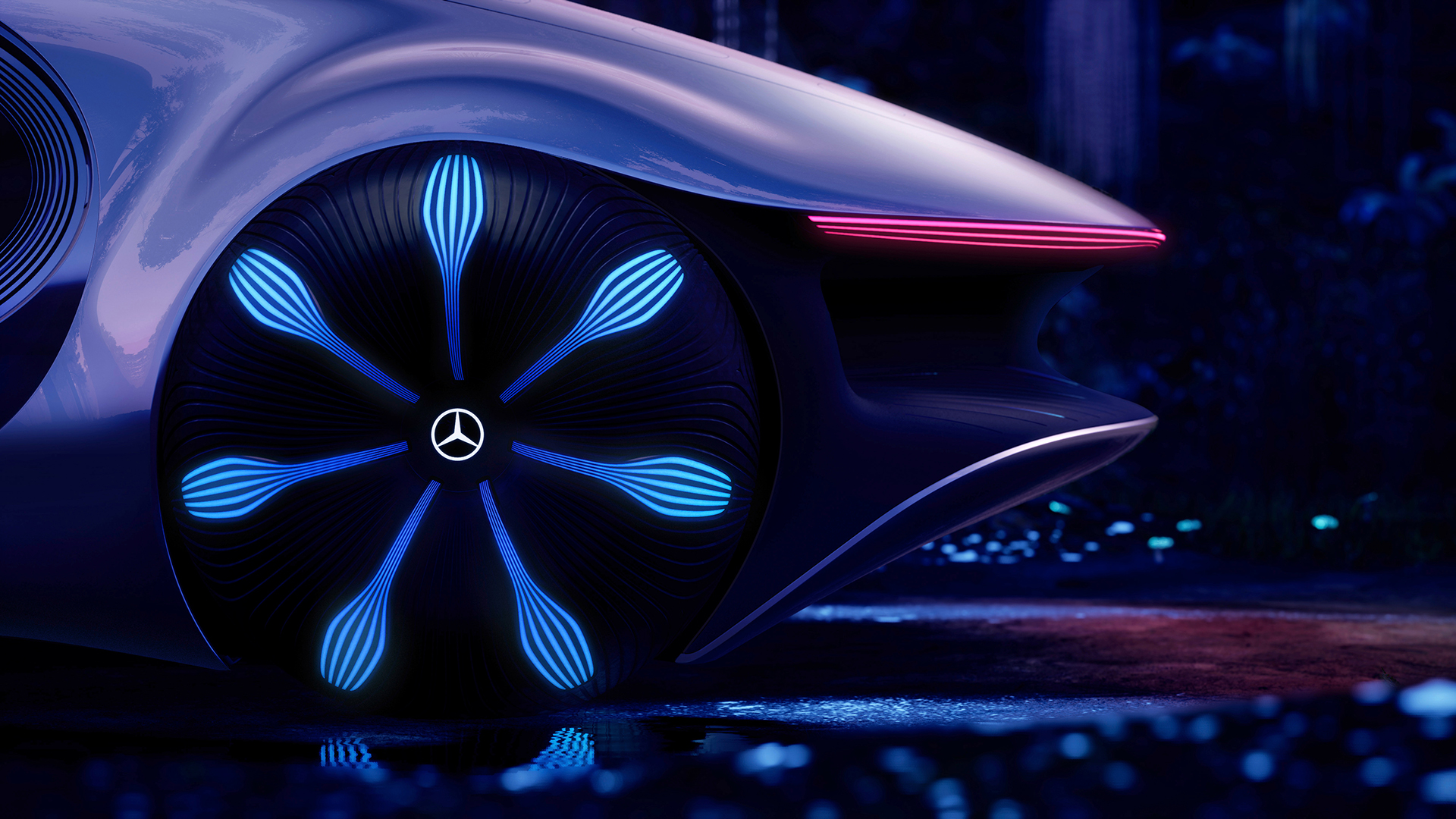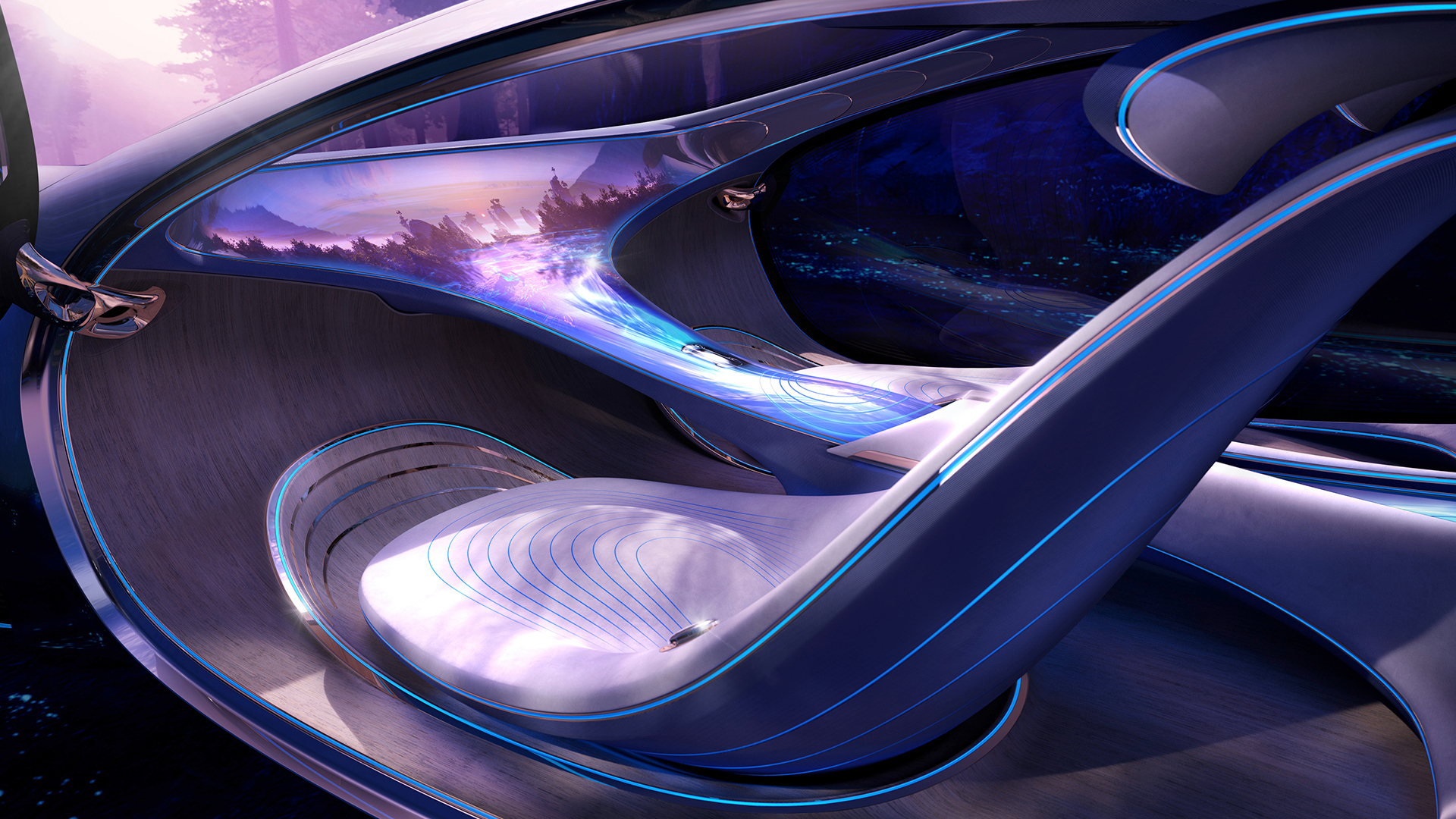Mercedes-Benz has delivered high-tech showstoppers at CES for a decade now. This year, it brought the Vision AVTR, a collaboration between designers for Mercedes and the 2009 blockbuster film Avatar. The show car is a symbol of the company’s plans, in the spirit of Avatar, to tread more lightly on the Earth in the coming decades. This concept comes alongside some of the best cars at CES 2020.
The AVTR is intended to enhance the driver’s connection with their surroundings and with the car itself. When the driver places their hand on the control in the center console, they can feel the car’s “pulse,” and the car can sense the driver’s heartbeat in return. “It merges the car and driver into one living organism,” said Gordon Wagener, Mercedes-Benz chief design officer.

The aerodynamic flaps at the back of the car mimic the hair of an animal as it moves. And the curved projection dashboard allows occupants to see forces invisible to the human eye, like magnetic fields, according to Vera Schmidt, director of advanced experience design.

Avatar director James Cameron took the stage with Mercedes head Ola Källenius to discuss the results of their companies working together. “I see the physical manifestation of a philosophy, an idea, a spiritual idea,” Cameron said.
Sustainability where the rubber hits the road
The appearance of Cameron, along with concept art for the Avatar sequels, was the climax of the show. But as sweeping as this design study is, Källenius made an announcement at the beginning of the event that will have more real-world impact.
As part of its Ambition 2039 initiative, the company aims to build carbon-neutral new vehicles. That means the materials, the manufacturing process –everything. Mercedes will partner with its suppliers all the way down the chain to create carbon-neutral vehicles within the next two decades.
That’s in addition to its commitment to electrifying its fleet and reducing overall energy consumption by more than 40% per vehicle. It already has two carbon-neutral manufacturing plants in Europe, with the rest of the continent’s Mercedes manufacturing to follow by 2022.
Looking for more awesome cars from CES 2020? We’ve had our eye on the Faraday Future FF91, Hyundai S-A1 flying taxi, and Sony Vision S so far this year.
Editors' Recommendations
- Mercedes G580 electrifies an off-road icon
- 2025 Mercedes-Benz EQS sedan gets new face, bigger battery
- Honda previews future EV lineup with Zero Series concepts
- Mercedes-AMG EQE SUV first drive review: a better electric SUV
- 2024 Mercedes-AMG S63 E Performance first drive review: high-performance plug-in

